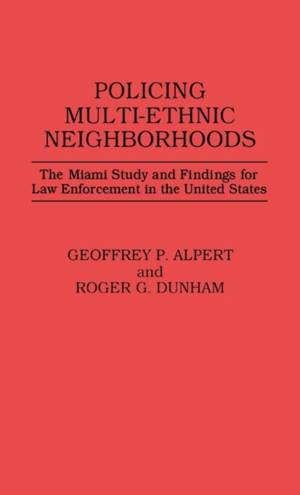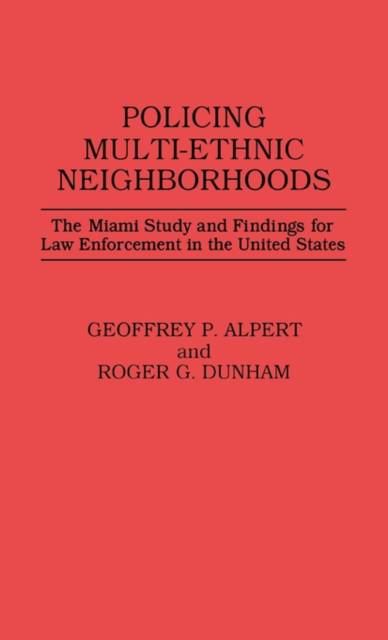
- Retrait gratuit dans votre magasin Club
- 7.000.000 titres dans notre catalogue
- Payer en toute sécurité
- Toujours un magasin près de chez vous
- Retrait gratuit dans votre magasin Club
- 7.000.000 titres dans notre catalogue
- Payer en toute sécurité
- Toujours un magasin près de chez vous
Policing Multi-Ethnic Neighborhoods
The Miami Study and Findings for Law Enforcement in the United States
Geoffrey P Alpert, Roger G DunhamDescription
A fascinating and well-written book by an established researcher in the field. Alpert treats problems faced by police in rapidly changing multiethnic communities such as Miami-Dade County, the locus of the study. The focus on the relationship of informal and formal social control systems provides more insight into the vicissitudes of ethnic neighborhoods and their support of the police than might ever be gained from hours of Miami Vice. The book offers sociohistorical background material, conceptual and analytical frameworks, methods, data, analysis, and data interpretation. Alpert finds that neither police nor members of black communities perceived the degree of congruence in these areas with policing reported for Cuban and Anglo communities. Residence in specific neighborhoods was more significant than ethnicity or gender in perceptions of policing. . . . Excellent bibliography. Upper-division undergraduates and above. Choice
In the past twenty-five years, the Miami metropolitan area has undergone a dramatic ethnic transformation that has brought with it complex challenges to the existing social order. The study grew out of an attempt to find workable and effective solutions to the problems faced by the area's police force in the wake of serious rioting and conflict between the populace and police. Alpert and Dunham argue that only by understanding the various ethnic groups' attitudes toward police and policing can beneficial means of maintaining order and controlling crime be planned and implemented. In developing their argument, the authors introduce the concepts of neighborhood as a conceptual and analytical unit, and they construct an interaction model that focuses on the interplay between the informal system of social control within the neighborhoods and the formal system of social control of the police.Spécifications
Parties prenantes
- Auteur(s) :
- Editeur:
Contenu
- Nombre de pages :
- 180
- Langue:
- Anglais
- Collection :
Caractéristiques
- EAN:
- 9780313262906
- Date de parution :
- 26-09-88
- Format:
- Livre relié
- Format numérique:
- Genaaid
- Dimensions :
- 140 mm x 216 mm
- Poids :
- 353 g







